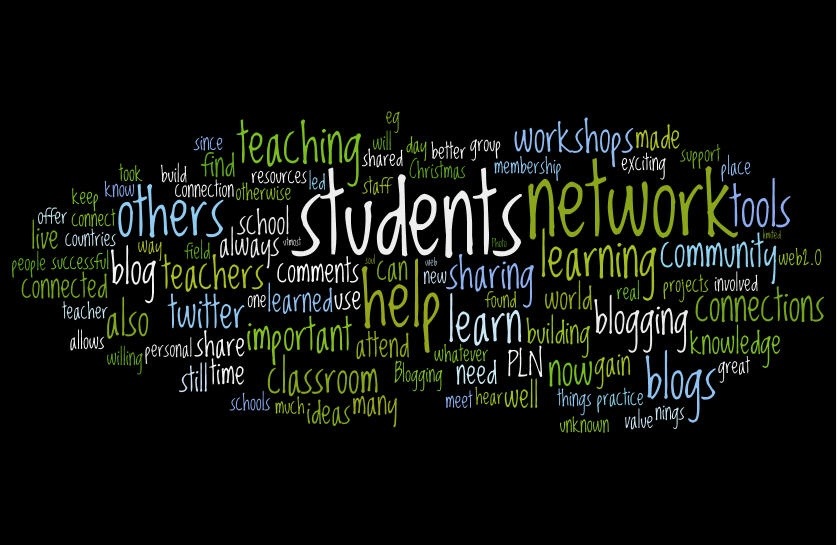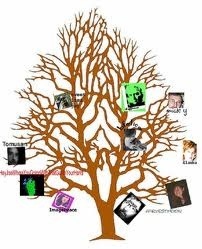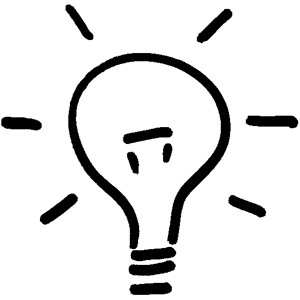Home » Posts tagged '#h817open'
Tag Archives: #h817open
Learning about Learning
I can’t believe this course is over and thank you Deborah L Gabriel for telling me about it and inviting me to the G+ Open Education community.
For the final activity we had to create a video or use another tool (avoiding just plain text) and reflect on what we have learned in this course, covering one of the following elements:
What aspect of openness in education interests you most (and why)?
What the future direction of open education will be in your opinion, justifying your answer.
Your experience of studying an open course versus traditional, formal education.
For me, it was interesting to find out that traditional academic literature and debate is being produced on open education. I had taken a number of MOOCs and read articles about the whole phenomenon, but I had never realised that it was starting to become “mainstream”.
The aspect of openness that interests me the most is it’s connection to social media and online communities. I like the idea of people being responsible for their own learning and I would love to see this developed in high schools. I have already talked about my feelings on how important online communities are for support, PLN and learning. I think open learning is exactly what social media was made for. Open learning and social media foster creativity, connectiveness, collaboration, and a love for learning.
I don’t think open learning will be a disruptive technology for a little while time, but I think it will start to be woven into the fabric of traditional education. I also think it will begin with higher education and high schools will eventually follow.
Schools and educational institutions are already realising the importance of open education and social media. I have seen an increase in the use of Twitter and Facebook for learning as well as blogging, Skyping and students being allowed to collaborate on projects. The human race is changing in many ways and the way we learn is one of them. Can you imagine sitting in a class of 40+ learning facts by rote and spending the day reciting them back at the teacher? As an adult learner you wouldn’t return and as a child you would most likely disengage and stay that way. But it wasn’t so long ago that this was normal. As technology and the world around us changes surely our brains and methods for processing information also changes. I blogged about this after reading an article about the possibility of Google making us stupid. Education is becoming open in so many ways. Not only through the use of technology and social media but also through efforts to engage learners and recognising that there are different ways to do this. Technology and social media is one of the main drivers for this change.
I consider myself as a born again learner. I used to love learning stuff when I was younger and was a voracious reader. I used to like making my own skin creams using natural ingredients, drawing the human skeleton from books, learning about animals from documentaries, about nature when on walks on the beach or countryside, cooking from recipes, and picking up bits of a language when on holiday abroad. But I didn’t really like school (apart from art and sport). I hated maths, grammar, standing up in class and cramming for exams. This Ted talk by Ken Robinson sums it up for me.
This paper, The Traditional University is Dead: Long Live the Distributed University, by Steve Wheeler makes for interesting reading and I agree with the section on the “regurgitation” of information.
For me, open learning is giving me the chance to learn in a way that works for me combining formal with creative learning. I listen to lectures and complete assignments and I like the formal structure which includes deadlines. But I can get my creativity fix by joining online communities, writing blogs and creating and maintaining a supportive and dynamic personal learning network. It’s like a two tier learning system, each tier complementing and supporting the other. This form of rhizomatic learning is something we looked at as part of the course and I have also previously blogged about it.
I personally feel that open learning will continue to grow and start to form part of a new approach to education (not sure if that will happen in my lifetime but at some point). What is crucial is how open education is managed. We need to make sure that it stays open and free/affordable where possible. It has to ensure that it doesn’t become too “mainstream”. I don’t mean this in terms of being available to all but in that it doesn’t try to become what our current education system is today. We can’t afford to lose the ethos of the early days of open learning. I have included a link to my Prezi presentation, Openness in Education. I learnt about Prezi from someone on my online leaning community! Thank you to the Open University for providing this course and to the G+ and Blogging community that took the time to read and comment on my activities. I enjoyed reading, and learnt from, all the posts and blogs I read, so thanks for sharing.
Open learner literacies – activity 24
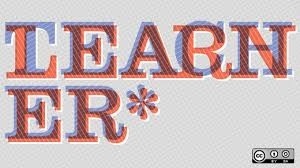
For the final activity this week we were first asked to read Helen Beetham’s Review and Scoping Study for a cross-JISC Learning and Digital Literacies Programme: Sept 2010
Secondly we had to draw up a set of open learner literacies.
“These should be based on what you have experienced and researched so far in this course. They should cover the types of skill you feel are important for an individual to learn successfully in an open learning context (whether that is using OER, in a MOOC or through informal, lifelong learning).”
The number of skills is up to you, although they should cover most of what you feel is important in being an effective open learner. Each literacy should be accompanied by some explanation and justification.
Blog your list of literacies and look at those suggested by others. You should reflect upon the following:
Are there literacies that are particularly related to the open element, or would your list apply to all learners?
Did you find literacies suggested by others that you would like to add?
If these are important literacies, how would you go about developing them for learners?
In the paper digital literacy is described as
those capabilities which fit an individual for living, learning and working in a digital society
I am using my own MOOC journey as a the basis of what, I think, are the digital literacies you need for the world of open learning.
Openness
I mean this in terms of openness to learning. Openness to trying new things. Openness to meeting new people. Openness to trying new ways of thinking. In fact openness to everything. Since doing MOOCs have tried lots of new applications and technologies. I don’t necessarily have to keep using them but I need to be aware of them and try them. Some of this is down to confidence but it also rests on how we may have learnt at school. Traditional schooling doesn’t always encourage openness, although this is changing. Much of what we did was based on individual attainment and what your results were and what you achieved. This is great but doesn’t always encourage openness and a willingness to share hard earned knowledge. I think traditionally there was an attitude of “I found it out and studied for it. If they want to find out they need to do themselves”.
Collaboration and community
I think at some stage in your learning journey you need to collaborate in some respect. You may totally embrace it or you may just do the bare minimum but at some point you will have to learn to work collaboratively. Learning within a community such as G+ and Facebook can also take some getting used to. Collaborating and contributing to communities is vital for your own learning but also to others. You are adding to resources already out there which makes it similar to a bartering community.
Research, skim reading and critical decision making
This is crucial as the amount of information can be overwhelming. At the start of my journey I was trying to read everything but there isn’t enough time and not everything is relevant or of sufficient quality. You need to find a way of running your eyes over something and make a decision, to keep reading or move on. In his blog Wayne Barry calls it critical filtering which I think is a perfect description. On a daily basis I come across stuff that isn’t relevant to what I am doing there and then, but I want to read later. Thanks to a fellow MOOCer I discovered Pearltrees which allows me to save information for when I have time.
Reciprocal learning
Having the confidence to offer your opinions and sharing your work. This was, and occasionally still is, my weak point. When I first had to create a blog I thought “who’s going to be remotely interested in what I have to say”? I have no formal qualifications on the subjects I was blogging about. The same problem with Twitter. What would I Tweet about and who would listen to little ole me”? My heart still does a little skip when someone comments on something I have blogged.
Most of the above should be applicable to both open and traditional types of learners but some literacies are stronger or work in slightly different ways since the emergence of social media. Take collaboration for example. Learners have always worked with their peers but now we are digital it has been taken to a completely different level. Since doing MOOCs I have collaborated with people from all over the world and at a more rapid pace. The scope is almost limitless.
For me the biggest change is that of reciprocal learning. Again this is something that also happens in traditional learning. Students speak to each other, recommend books, form study groups etc. However, technology has transformed this, particularly in open learning. With the rise in blogging, social media, Google Hangouts etc more of us are “publishing” and reading the posts of other students as well as “qualified” academics. In essence we are all educators as well being educated.
A lot of these digital skills are already being used by people when they are socialising using social media or sat in a circle of friends chatting. What a lot of people don’t realise is how easy it is to transfer this to learning. One of the big barriers is confidence but this can be overcome with experience and the support you get from online communities. What is really exciting is that the skills learned online can be transferred to the “real world” so digital literacies shouldn’t be seen as exclusive to this realm.
Open Technologies – Activity 22
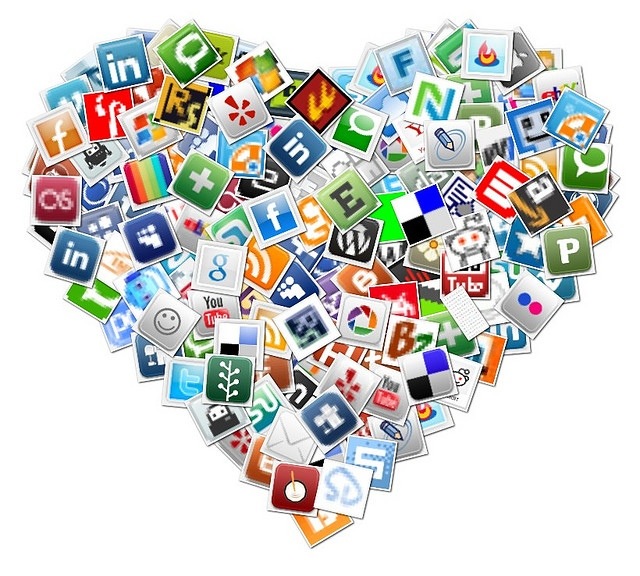
Image by Kathleen Donovan
Write a short blog post suggesting one additional technology that is important for open education, either from the role of a learner or a provider. The technology can be one that has been significant, or one that you feel is going to become increasingly relevant.
What you include as a technology can be quite broad: for instance, it can be a general category (such as social networks), a specific service or a particular standard.
In your post briefly explain what the technology is, and then why you think it is important for open education. The emphasis should be on open education in particular, and not just education in general.
Personally I would choose social media as it has become my PLN (personal learning network) and an important way of getting and receiving support. Wikipedia defines social media as
the means of interactions among people in which they create, share, and exchange information and ideas in virtual communities and networks.
There are many examples of social media, Facebook and Twitter for example, both of which I use. But for me G+ has become the most important and, I think, is perfect for open education. I find G+ to be a friendlier more supportive version of Facebook. I am a member of a couple of G+ communities created by students on MOOCs I am studying, and have created one myself. The Human-Computer Interaction MOOC community now has 365 members and is essential for asking questions about the course and assignments, providing additional resources and supporting each other. To me it is the common room at my old university where I spent time socialising with fellow students and working together on assignments or projects. Google hangouts give you the opportunity to speak “face to face” with colleagues.
This online network also helps me stick with my courses. I have taken about 10 so far and dropped out of two. Both of those involved courses where I wasn’t a member of any online community (from searches I made I couldn’t even see that there was one) and I didn’t have the sense of connection I normally had. Being part of these communities gives you a sense of belonging and I also had a feeling that I would be letting my peers down if I simply dropped out. Being part of a community also makes me feel that I have invested more and makes me think twice about dropping out. Given that MOOCs report such a high rate of students “dropping out” maybe this is a way of keeping more students engaged?
Some MOOCs have 50,000+ students enrolling on their courses. Admittedly the numbers do reduce as a course continues, but the numbers are still too high for one professor and a handful of teaching assistants to support students. Online communities can help as someone will always have the answer, and given its global appeal, 24 hours a day.
Online communities provide me with additional reading and links to useful and interesting sources of information. It means that when I log in each time I don’t know where my learning will take me.
To me online communities are what your tutors and peers were at college or university. You went to the lecture and did the exams. Meeting with other students and your tutor was not only essential but enhanced the experience.
“Pedagognology” – Activity 21
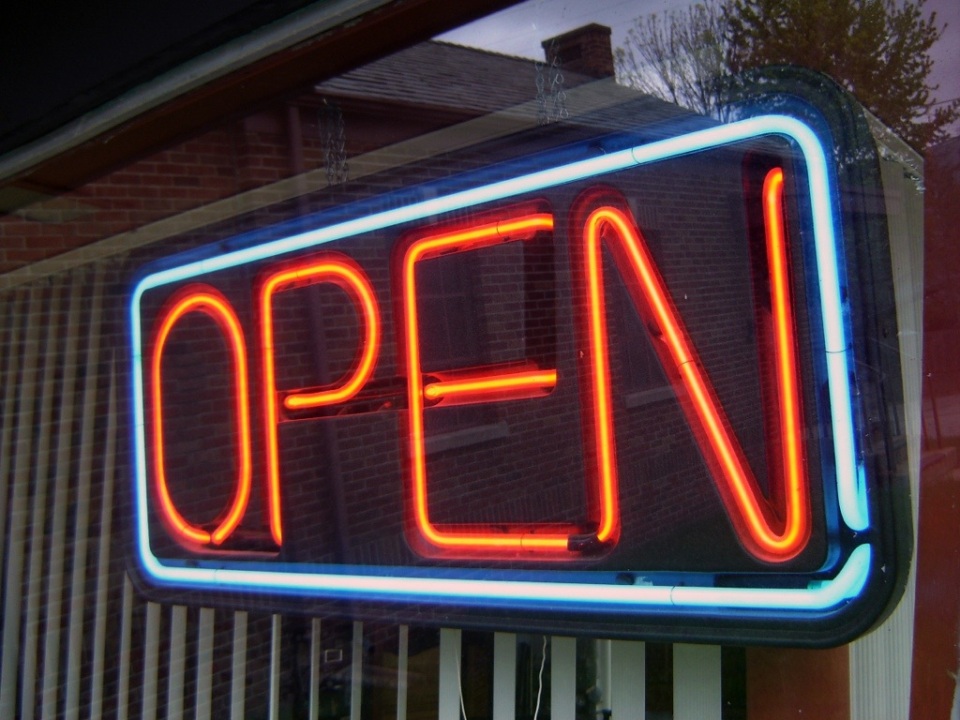
Use the Week 6 forum to discuss the relationship between technology and pedagogic theory and practice, drawing on your own context and experience.
What is your own experience and view?
Do you regard either pedagogy or technology as more significant than the other?
How do technology and pedagogy influence each other?
Do you have experience where either technology or pedagogy has been given more weight than the other?
The title I created for this post gives a clue to my position on this subject. We started by reading chapter 1 of Martin Weller’s The Digital Scholar We are introduced to the term Technological Determination which was first used by Thorbein Veblen, an American sociologist.
The technological deterministic viewpoint is that technology is an autonomous system that affects all other areas of society. Thus human behaviour is, to a greater or lesser extent, shaped by technology
This is often discussed in negative terms but I see it from a different point of view. Human behaviour is shaped by many things including culture. To me technology is just another form of culture like film and art. And similarly, debate rages here too. Think of the arguments over modern art and film and opera versus pop. None of the above are bad they are just a matter of your level of exposure, taste, preference etc. When I was 14 I loved the group Bros, now my tastes are slightly improved!
To me, technology versus pedagogy is the same thing. There is no “versus” as they can work separately, in part and together. At the school where I work we are slowly introducing iPads but already use Twitter and Facebook. We will soon be moving to Google in terms of documents, email and our website. Departments and individual teachers have Twitter accounts for their subject areas and to engage with their students. I use social media for advertising, PR and engaging with students and parents. We also use Edmodo, GCSEpod and Doddle and Vimeo. Our PE department use Wii Just Dance for lessons and it goes down a storm with students. But we have also introduced lacrosse, to me a fairly old fashioned sport, which is being met with equal enthusiasm by students. We also practice DEAR (drop everything and read, which is basically just that. Everyday at a specific time we all drop whatever we are doing and read) as a way of encouraging literacy. I see most students reading good old fashioned books but some are using Kindles and other tablets. Last week I had to walk around the school and spotted an English class sat outside in the sun reading a play from books.
This just illustrates that neither replaces the other and people will always have a preference for one but, generally, this can be accommodated in an education setting. Technology and pedagogy influence and drive each other. There may come a day when technology has a bigger influence but however far it goes it will all have originally come from traditional pedagogy. I am doing an Internet history course and its amazing how much of what we do now is influenced by things like the code breaking equipment at Bletchley Park. This happened a long time ago but it’s influence live on in the digital genes of the Internet.
Admittedly, I couldn’t study what I do without technology as I don’t have the time or money to attend a physical college. So for me technology currently is the winner but that’s not to say this won’t change. I was also at school when we didn’t have computers and the Internet was still in the early stages of development. I know you can teach without technology but we would miss so many opportunities and there is a whole wave of creativity we would miss out on. Children blogging, making films, debating on Facebook, and creating art with Photoshop to name but a few.
Technology is just like any tool that humans discover, invent, use and then adapt for other uses. Man discovered fire as a means of keeping warm and then heating food. We have now adapted the principal to posh gas barbecues, wood burners and fancy heaters outside in the garden and pubs. We invented the wheel and look what we have done with that. One day we won’t use wheels as we will all be in flying cars and gliding trains but echoes of the original wheel will always be heard.
Like the type of education we are discussing we need to be Open. Open to new technologies and open to trying them. Maybe they won’t work. Maybe they won’t work in the way they were intended. But if we don’t try we won’t know and that rather defeats the point of learning.
Activity 20 – Rhizomatic learning
For the last activity of week 5 we watched Dave Cormier Embracing Uncertainty – Rhizomatic Learning in Formal Education (2012).
I enjoyed reading (read the transcribe and didn’t watch the video) this article as I am a fan of what I now know to be rhizomatic learning. My favourite line has to be
And at that point the community really can be the curriculum
To me, working in a high school, the word curriculum usually makes me think of regimes, timetables, tradition, conservatism, basically something regimented and old fashioned. I like the idea, and have experienced, the concept of the community being the curriculum.
I also like the idea of a messy network which is dynamic. My ideal method of learning is a combination of good old fashioned lectures, tests and assignments (online or being physically present) and making and joining networks which take you in all sorts of directions.
Cormier also describes them as
taking off in directions, they fit into an eco system, they adapt to the eco system around them. They grow and spread via experimentation, so they’ll try out this way, maybe they run into a rock, maybe it turns a corner, maybe it hits a wall but it ends up reaching out it’s tendril and trying to figure out whether it can find a place to grow, whether the nutrients are there, whether that’s a direction that’s gonna work out. And again I think this is a really nice metaphor for the learning process.
I too like this metaphor and enjoy the process of my tendrils working their round the Eco system. I also like the fact that occasionally a root will break off and then start another plant off. The network cultivated in my EDCM MOOC technically broke off when the course came to an end. However, the community still exists not only in the original “neighbourhood”, but in new ones which then took off other directions. I would use the metaphor of a family tree. You start and raise a family. Parts of the family grow up and start their own. Families may break up and never or seldom speak or maybe they marry into a new family and become step relatives or in-laws.
I could definitely imagine implementing rhizomatic learning in, as an example, my high school. However, it wouldn’t replace traditional learning. It would complement it. The ratio of pedagogies may change but they would still complement each other.
The main issue of rhizomatic learning is that it’s “looseness” wouldn’t suit everyone. Some people need a traditional structure, but this would be the plus side of using a complementary way forward. Using a combination of the traditional and rhizomatic could mean being able to reach and engage with more students as you appeal to whichever preferred method they have. I can see this working with some of our students who are not always in classes for one reason or another. Give them the structure of the school day and curriculum but teach it using a rhizomatic method may appeal to them and give them the confidence as they manage their own learning.
Students need to be more prepared for the outside world. They are too mollycoddled with laws and policies covering health, safety, human rights, equality etc. (I am not disagreeing with them but there seems to be too much wrapping in cotton wool in case something happens) Show students how to take risks and let them once in a while. They need to experience adventure, danger (I don’t mean throw them in a shark tank danger, more supervised rock climbing or even that they can lose or fail at something and that the world won’t end). Rhizomatic learning is just an adventure, a journey, taking risks along the way.
Activity 19 – Connectivism? Check!

In this activity you will be devising a course that takes a strong connectivism approach, based on some key principles devised by Siemens.
Take the description of the short course on digital skills that you developed in Week 2 and recast it, so that it adopts a highly connectivist approach. Or, if you prefer, you could take this ‘Open education’ open course as an example and recast it in a more connectivist model, or another course you have familiarity with. You should take each of the principles set out above and state how they are realised in your course, either as a general principle or by giving an example activity.
I was quite excited about attempting this activity because I am basing it on an OER/online course that some of us MOOCers created ourselves! So not only can I base my answers on the course but also on the process of creating the course.
Looking back at the initial “course” I designed in week 2 I realised that I had chosen a similar subject, social media/digital skills for teachers, so it was obviously meant to be!
In some respects I found connectivism complicated. Reading about it that is. I read Siemens Connectivism, a learning theory for the digital age. and Downes, What Connectivism is and I struggled through it. It was only when I got to the end that I realised I was already doing it. What I found difficult was the theory and the way it was presented, in parts, in the above articles. I then looked back over comments on my blog, discussions in the G+ community and Tweets and remembered how simple it was. I am doing it all the time!
According to Downes connectivism is;
the thesis that knowledge is distributed across a network of connections, and therefore that learning consists of the ability to construct and traverse those networks.
Basically it’s all about the connections and how you manage them. Something which I experience and value everyday. In addition to using Twitter, Facebook, G+, I have started a G+ community for one of my other MOOCs and recently moderated a Twitterchat for another MOOC I am doing. So I am constantly “connecting the nodes and information sources” Siemens refers to. Whilst blogging for this MOOC I started talking to students doing the full version of Open Learning and via some misinterpretation on my behalf we ended up creating the OER named My Social Network Toolkit.
To be able to base an activity on a nearly real life course is obviously too good an opportunity to miss. Thank you to John Baglow and Sukaina Walji for letting me use parts of their work in my blog.
Course outline
My Social Network Toolkit: Course Outline
1. Introduction
The course starts with an introduction and then looks at some of the most popular social media tools that are used in education. John Baglow coined the term “DIY (Do it Yourself) toolkit.” when talking about the resource we created. “We will suggest a basic set of tools and you will then be encouraged to explore their potential. When you use each tool we want you to use it to connect with other people also working on the Toolkit”. We suggest and actively encourage students will learn
- by engaging with other people’s opinions
- by forming interest groups with other people
- you will become more skilled at using social media as a learning tool
- by developing and maintaining links with others
- you will develop the skill of seeing how ideas interrelate??
- the skills and knowledge you acquire will be up-to-date
- you will constantly be developing the skill of decision-making
How will all of this happen? Students are encouraged to connect and let others know how they got on with a specific tool they have tried.
The course also includes a section on Cybersafety and Online Etiquette, an outline of how the tools can be used in the classroom and further reading.
That was a short outline of the OER we are in the process of creating and hope to post soon. I will now look at the key principals of connectivism and how they are realised in our OER.
Learning and knowledge rests in diversity of opinions.
Learning is no longer about sitting in a class, listening and learning parrot fashion. Students are encouraged to be more proactive and the Internet is perfect for this. Visit any social network community and watch how a simple post can cause a debate. Our course is not advocating that specific social media is used, or even that it is used at all. We are just suggesting that people take a look and give it a go. Everyone has their preferred platform and that is the beauty of social media; the choice is ours.
Learning is a process of connecting specialised nodes or information sources.
The three of us “meeting” and starting a project was definitely a process of connecting the nodes and information sources. John introduced me to Etherpad as a method of collaborating and brainstorming our initial ideas. We then moved to Google Drive and Prezi which we shared so we could all work on them. John set up the G+ community which we used to hold initial discussions and will eventually be the platform for our OER.
As you can see from the outline of our course
“We will suggest a basic set of tools and you will then be encouraged to explore their potential. When you use each tool we want you to use it to connect with other people also working on the Toolkit”
we are actively encouraging people to go down the connectivism route. This is the best way to learn and something I have found in my MOOC experience. Someone sets you on the road with an idea or lecture and you go off and explore, making connections along the way. These will inevitably lead to more connections and so the process continues.
Learning may reside in non-human appliances.
In this case it applies to the devices we used to create this OER and those that learners will use to access it. Laptops, PCs, smart phones and tablets. This appliances allow us the freedom to learn.
Capacity to know more is more critical than what is currently known.
Our learning no longer stops when formal education ends. We can continue to connect and learn for as long as we like. The whole point of our OER is to start people on their way. We don’t claim to be an authority and emphasise the need for further reading and readers to make connections. By connecting with like minded people (discussing, arguing, collaborating etc) we make the things we learn more relevant to us.
Nurturing and maintaining connections is needed to facilitate continual learning.
The connections we gain are our PLN (Personal Learning Networks) and help us to continue learning. In our Toolkit we encourage students to make connections by following Twitterchats, comment on blogs and joining the G+ community. We recognise this as one of the most important factors to learning something new: Being able to connect and collaborate with our peers.
Ability to see connections between fields, ideas and concepts is a core skill.
Because the emphasis is on making your own connections and self learning, managing the connections is a key skill. It is easy to be overwhelmed, unmotivated and become bogged down in irrelevant information. Being able to see and use the connections is a key skill which does come with experience and as confidence is gained.
Currency (accurate, up-to-date knowledge) is the intent of all connectivist learning activities. The point of encouraging students to make connections is so that they are able to access up to date information. By accessing learning via communities and individuals you are learning from the people who are directly involved in the areas you are interested in. If you continue to follow sources in this way you get updates as they do and your learning becomes dynamic.
Decision making is itself a learning process. Choosing what to learn and the meaning of incoming information is seen through the lens of a shifting reality. While there is a right answer now, it may be wrong tomorrow due to alterations in the information climate affecting the decision. Our toolkit places choice and responsibility in the hands of the resource user. Throughout we encourage them to investigate and experiment but the final decision as to what they take up and how far they take it is up to them.
I couldn’t do what I do without connectivism. I have done MOOCs where I haven’t made the connections and although I completed the course it lacked the energy of courses where connections were made. I did what I had to to pass and nothing more. Which is fine if that’s all you want to do but to me it seems a waste of an opportunity. The connections I have made on previous courses are still with me and continue to help me learn. As Siemens said “The pipe is more important than then content within the pipe
Connectivism compliments the traditional concept of education. I think anyone involved in networks (blogs, Facebook, Twitter etc) is already educating others based around connectivism. The course we created is just a more concentrated version of what people do every day.
Activity 17: The role of abundance

Image by Joi Ito
The Open Learning week started with us reading Martin Weller’s A pedagogy of abundance
We were asked to do the following;
In the conclusion two questions are posed: ‘The issue for educators is twofold I would suggest: firstly how can they best take advantage of abundance in their own teaching practice, and secondly how do we best equip learners to make use of it?’
Post a comment to contribute an answer to one of these questions, drawing on your own context and experience. For example, you might suggest that we could best equip learners to make use of abundant content by developing their critical analysis skills.
I like the whole debate of abundance and although I am in the middle of it, MOOC addict that I am, I have never really thought about education and abundance. To me abundance relates to crops, grazing, store cupboards, actually anything food related but not education. But when you think about it, it’s obvious that it is abundant. Think about it. In the 19th century only the rich (mainly boys) were educated and the only way you could access knowledge and resources was by attending school, having a governess or living in a household big enough for a library. In other words, you were rich. This slowly changed over the decades as we saw the emergence of education for all, cheaper books and libraries. However, the things associated with education (the resources, expertise and knowledge) were still scarce. You had to go to the library or attend school, college or university to access these resources. Educators were put on the same level as lawyers and doctors, trained experts who spent years learning their trade (they still are but I feel they have became more accessible).
And now we have the digital devices and tools that allow us access to so much more. It doesn’t matter where you are or who you are so long you have internet access, a computer (smart phone, tablet etc) and a basic level of IT. Obviously this still excludes large groups if the population who don’t have this, but nonetheless you stand a better chance now compared to the 19th century. You can access online degrees, MOOCs, OERs, online books, talks, programmes and the experts themselves. A lot of this costs nothing (apart from the obvious costs of broadband and your own time). In his paper Martin Weller talks about “Freemium”
Freemium as the opposite of the traditional free sample: instead of giving away 1% of your product to sell 99%, you give away 99% of your product to sell 1%. The reason this makes sense is that for digital products, where the marginal cost is close to zero, the 99% cost you little and allow you to reach a huge market. So the 1% you convert, is 1% of a big number.
This is perfect for people like me who can’t afford to buy everything I want as I can access it and the providers make money from those who can and are are prepared to pay for a premium service.
I have been desperate to take courses but don’t have the time and money to go to college. With MOOCs I can basically learn anything I like. To complement this I have access to another level of “education”, namely social media and OERs. Since doing MOOCs I have had to create a Pearltrees in order to manage all the things I need/want to read and watch as part of what I call my second education (as opposed to the formal one I undertook at “proper” institutions).
Pearltrees means I can save things posted and sent to me via social media communities, plus the things I have found online, to an online “tree” for reading at a later date. I am constantly trying to catch up with the things I want to read. Don’t get me wrong I am not complaining. I love the fact that there is so much out there and that I can share this with my peers and PLN (personal learning network). It feels like I am helping to educate myself and others and that they are helping to educate themselves and me.
Whilst having all this information to hand is a boon we need to learn how to manage it just like you would any tool. Just because its abundant and free doesn’t mean we have to like or use it all. We can still be discerning. Free doesn’t mean good, or even that it’s relevant to you. We don’t have to be grateful either as it doesn’t do anyone any favours. I think this is one of the most important lessons we can learn and teach other. Once we have understood this we will start to appraise free resources in the same way we would if we were paying for it. However, you’re not asking if it is worth your hard earned cash but if it is worth your precious time. Limited time + abundance of resources = time spent on resources not suitable, relevant or of good quality.
Personally I have learnt this through experience and as my confidence as increased. When I first started I assumed everyone knew better than me and anything they wrote had to be read. I felt guilty if I didn’t read someone’s blog or G+ post. If I started reading something but didn’t like it or it wasn’t relevant I persevered as I felt bad when someone had taken the time to write it.
But this led to frustration when I realised I had lost half an hour reading something that turned out to be irrelevant to what I was doing. So I started be discerning. Disregarding the irrelevant and giving my full attention to what was useful and helpful to what I was doing. That’s not to say the things I disregard aren’t useful, they could be to someone. Another good thing about using digital tools and communities, you will always find something you need.
Being a teacher in this day and age must be amazing in terms of resources. They have the whole world at their fingertips in terms of resources and their peers. But like learners they have to learn how to manage the resources and not let the resources manage them.
Oh and another useful skill for learners……. Skim reading!
References
Weller, Martin (2011). A pedagogy of abundance. Spanish Journal of Pedagogy, 249 pp. 223–236.
Oops! How did that OER happen?
I have just finished a Google Hangout with Sukaina Walji and John Baglow where we started planning our OER. Creating our own OER? How did that come about? Well it was all John’s fault for not being clearer. Or possibly mine for not reading properly.
In response to one of my posts John wrote
Nat, do you work in He or FE, where I am? In preparation for our TMA I am thinking about ways that MOOCs could have a role in my college. It would certainly be with adult learners, not the 16-19 students and maybe CPD and HE courses in FE are the best candidates.
I wonder if we could produce a mini-MOOC just for our own staff. What do you and Deborah think?
I read…….. “let’s create a MOOC!”
John replied
Nat, when I wrote “perhaps we could produce a mooc for our own staff” I meant we in my college – but maybe we could come up with one ourselves! What topic do we already have some stuff on? I teach teacher training now. Maybe we could come up with part of a mooc for our own colleagues. It wouldn’t be very massive of course. Any ideas for a subject? Blended learning? Improving your learners’ digital literacy? Communication? …..
Then Sukaina joined in and that was that.
This to me is the epitome of open learning and captured the spirit of creativity, collaboration and of in the “momentness” it’s supposed to embody. Despite having using G+ for a while this was my first Hangout and John introduced me to Etherpad so if nothing else I have learnt something already.
We have since down scaled the MOOC to an OER but that doesn’t matter. We have started something, we will invite others to join in, and we will see where it takes us. Hopefully we will create am OER. Maybe someone else will develop it into a MOOC. Who knows. Watch this space………..
PLN – Innovative or Old Hat? – Activity 16
Activity 16
Now you have a definition of PLN, the question you need to answer is:
‘Does this offer anything new?’
In terms of innovation, can we say a PLN is truly innovative, or merely a rebadging of existing practice? As with many new terms in educational technology, some people find a PLN usefully captures a new development, while others say it is simply a new term for an old practice.
In considering this, take into account the scale and possibilities offered by new technologies, past networking practice and any of the references you found when constructing your definition.
Write a blog post setting out a position statement on what PLNs are and whether it is a useful term or not.
Of course PLNs are not new. Since the beginning of time humans have reached out and connected with each other and tried to establish networks.
People still connected with each other before the Internet and the World Wide Web was invented. In fact, academics trying to connect with other academics was one of the driving forces behind the creation of the internet. Prior to this people phoned each other, met face to face, held meetings, sent memorandums (for the youngsters out there memorandums are basically emails but on paper, hand written and put in a person’s pigeon hole. If you don’t know what a pigeon hole is you haven’t lived). People would hold training courses and attend conferences.
This blog sums up the changes perfectly.
What is new is the way they are done. We now have the technology to connect with anyone, anywhere at anytime in our neighbourhood or the world. Social media is now being considered as a PLN, even as part of someones personal development.
The blog author summarises;
The kinds of discussions I have, and information I share with my PLN hasn’t changed all that much over the years–what works in class, how students learn, how to become a better teacher. How I meet other teachers, where we discuss ideas, and how we share information has changed. Significantly. My PLN now includes teachers who live quite far from me—in Asia, Australia, the Americas, Europe and Africa. I meet them online. I learn from them online. I share with them online.
There are a lot of sites and posts about PLNs out there which highlight their importance and how guidance is being sought by users. It would appear there are PLNs for PLNs!
In this blog, Teachers Helping Teachers: The PLN Road Map Andrew Marcinek explains how to start a PLN
Find like-minded people and start a conversation. Make your PLN personal and beneficial. And remember, it’s ok to make it all about you
PLNs are not new they are just wearing a different coat. The term, PLN, is useful because it is simple and says exactly what it is. It is up to you how and what tools you use and who you connect with (personal). The aim is to acquire knowledge through connecting and collaborating (learning). It’s all about talking to the people you work with and people all over the world (network).
My definition
A network of people who work together (digitally or face to face) and support each other in a learning experience. Learning is improved by this connection which is dynamic, global, supportive, exciting and constantly on the move
highlights the other exciting aspect of PLNs. They aren’t just for teachers and their students or even subject and industry experts. It’s a network of people which can be anyone. Because of the technology and resources available to us we can all be students whenever we want to be.
Activity 15 – Defining a PLN (Personal Learning Network)
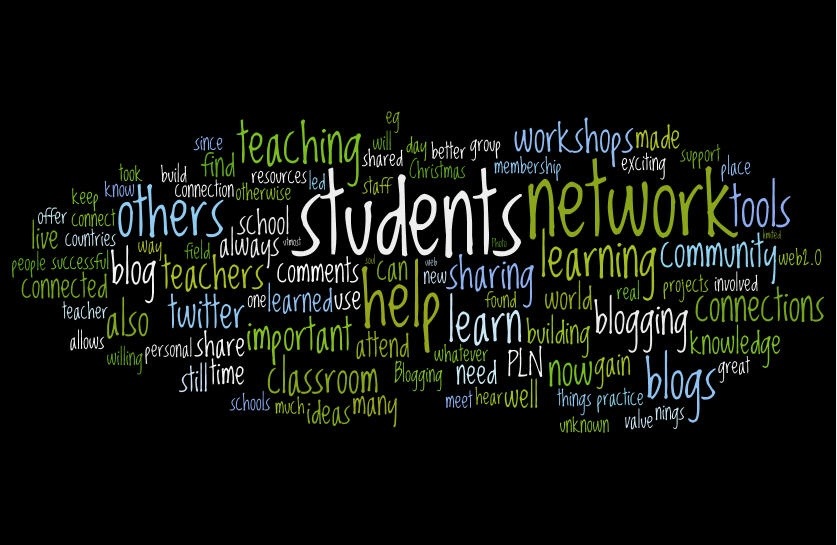
Photo by Sue Waters
Activity 15 concerns PLNs;
As with many new terms, PLN is used in a variety of contexts. The Wikipedia entry defines it as:
‘an informal learning network that consists of the people a learner interacts with and derives knowledge from in a personal learning environment . In a PLN, a person makes a connection with another person with the specific intent that some type of learning will occur because of that connection.’ (Wikipedia, 2012 )
Use search tools and the discussion in the forum to formulate your own, one-sentence definition of a PLN.
I have had PLNs in my life, at college and uni, but this wasn’t what they were called then. Study group or partner was what we would have called them except we didn’t give them a name, we just did it generally because we had been asked to as part of an assignment. In my experience you either teamed up with friends and did well (once you had stopped snacking, gossiping and flicking through magazines) or were teamed up by a teacher and it turned out badly. Someone didn’t pull their weight or turn up and there was always an over-ambitious one that out shouted everyone else in the group.
It is only since I started doing MOOCs that I have discovered the power of PLNs. Actually I didn’t discover it in my first 2 MOOCs, it was the third one E-learning and Digital Cultures where I was truly inducted. Some of you may have already heard me going on about this course but it really was a defining moment for me. I had embarked on a course I was terrified and exited about. On my previous two MOOCs there had been no interaction on social media and I wasn’t keen on the official forums. All of a sudden I was thrown into a thriving, dynamic and supportive network which I still remember with great fondness today.
Obviously PLNs don’t need to be purely digital, you can have a discussion by the water cooler or in the canteen. But social media and technology make them global, instant, dynamic and potentially as big as you like. My experience of them has made me determined to try and create or build upon a PLN in future courses if one doesn’t already exist. To me it is an essential component of any learning experience.
I came across lots of websites dealing with the subject which highlights how important they are becoming/have become. I have included a selection;
How to create a robust and personal PLN
So to the difficult bit. My one sentence definition of a PLN
A network of people who work together (digitally or face to face) and support each other in a learning experience. Learning is improved by this connection which is dynamic, global, supportive, exciting and constantly on the move.
(Okay two sentences but that was hard enough without trying to get it in one!)

